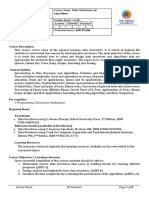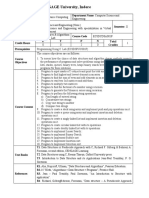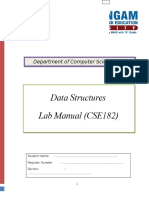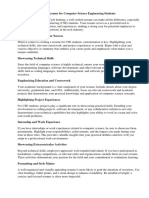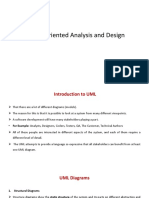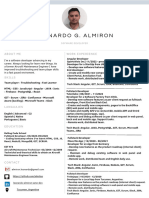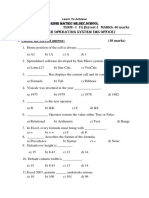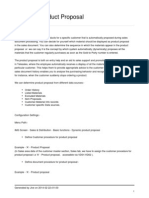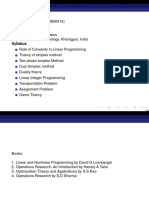0% found this document useful (0 votes)
15 views3 pagesDS Lab Syllabus
The document outlines the Data Structures Lab course for JNTUK B.Tech. R23 Regulations, detailing course objectives and outcomes focused on practical applications of data structures. It includes a list of experiments covering array manipulation, linked lists, stacks, queues, binary search trees, and hashing, along with specific programming tasks for each topic. Recommended textbooks and reference materials are also provided to support the course content.
Uploaded by
Preethi BitraCopyright
© © All Rights Reserved
We take content rights seriously. If you suspect this is your content, claim it here.
Available Formats
Download as PDF, TXT or read online on Scribd
0% found this document useful (0 votes)
15 views3 pagesDS Lab Syllabus
The document outlines the Data Structures Lab course for JNTUK B.Tech. R23 Regulations, detailing course objectives and outcomes focused on practical applications of data structures. It includes a list of experiments covering array manipulation, linked lists, stacks, queues, binary search trees, and hashing, along with specific programming tasks for each topic. Recommended textbooks and reference materials are also provided to support the course content.
Uploaded by
Preethi BitraCopyright
© © All Rights Reserved
We take content rights seriously. If you suspect this is your content, claim it here.
Available Formats
Download as PDF, TXT or read online on Scribd
/ 3












